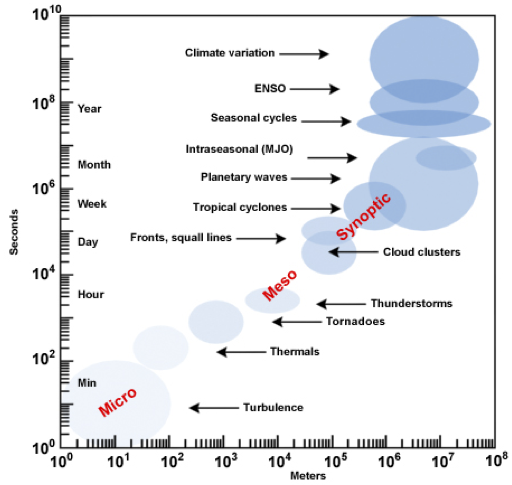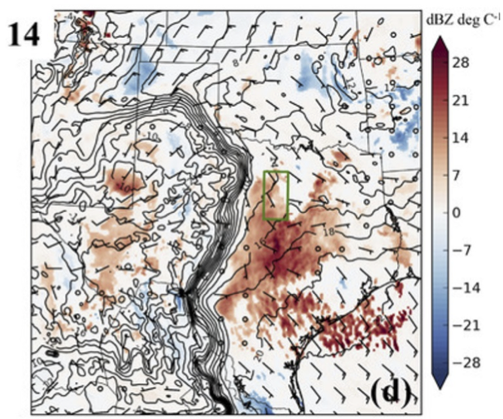[Introduction]
Atmospheric dynamics describe the physical processes responsible for atmospheric motion at all spatial and temporal scales. These processes include global and regional-scale circulations, deep convection, boundary layer turbulence, atmospheric waves, and tropical and extratropical cyclones.

The spectrum of atmospheric dynamics (from the COMET program)
Improved insight into atmospheric dynamics can lead to better predictions for high-impact weather events. For example, observations can be targeted into specific inflow regions that are important for a tornadic supercell. Assimilating these observations can then improve forecasts of the subsequent tornado.

The MAP lab conducts research aimed at understanding atmospheric dynamics in the context of predictability. Examples of recent and ongoing research on this topic include:
* ======================================================================== *
Highlights of Recent and Ongoing Research
[Improving the understanding and predictions of the mechanisms responsible for nocturnal convection initiation]
From Degelia, S. K., X. Wang, et al. (2018)

[Understanding the role of boundary layer dynamics in tropical cyclone intensification]
From Li and Y. Wang (2021a; 2021b)



